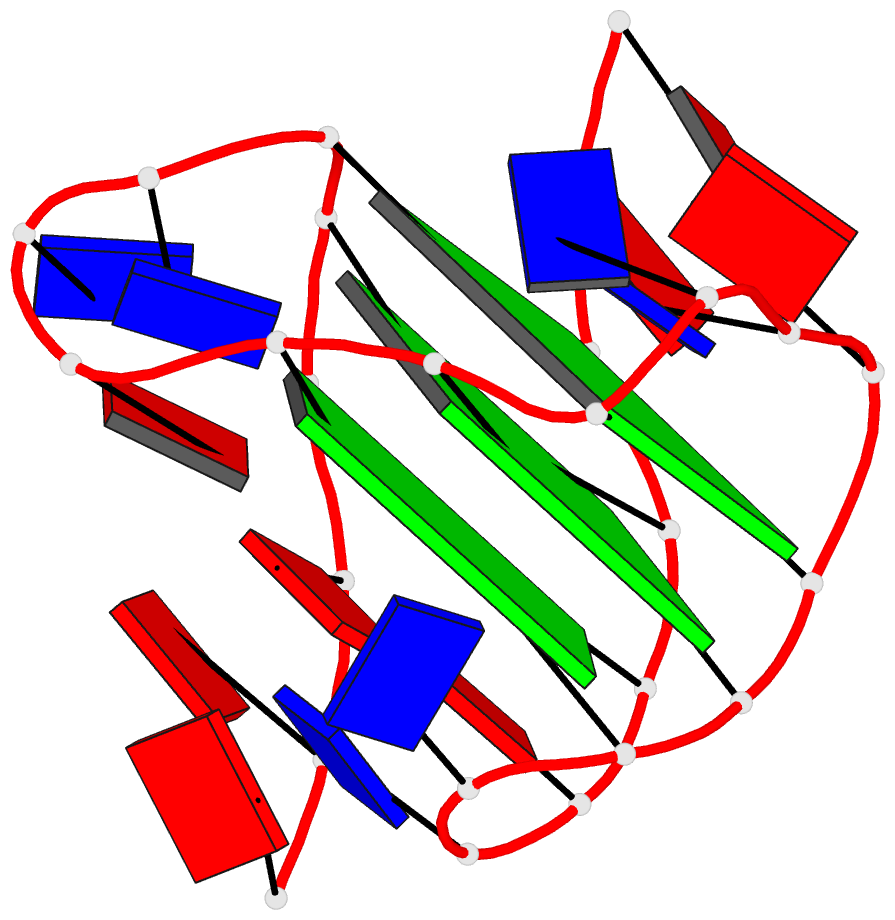Summary information and primary citation
- PDB-id
- 2hy9; DSSR-derived features in text and JSON formats
- Class
- DNA
- Method
- NMR
- Summary
- Human telomere DNA quadruplex structure in k+ solution hybrid-1 form
- Reference
- Dai J, Punchihewa C, Ambrus A, Chen D, Jones RA, Yang D (2007): "Structure of the intramolecular human telomeric G-quadruplex in potassium solution: a novel adenine triple formation." Nucleic Acids Res., 35, 2440-2450. doi: 10.1093/nar/gkm009.
- Abstract
- We report the NMR solution structure of the intramolecular G-quadruplex formed in human telomeric DNA in K(+). The hybrid-type telomeric G-quadruplex consists of three G-tetrads linked with mixed parallel-antiparallel G-strands, with the bottom two G-tetrads having the same G-arrangement (anti:anti:syn:anti) and the top G-tetrad having the reversed G-arrangement (syn:syn:anti:syn). The three TTA loop segments adopt different conformations, with the first TTA assuming a double-chain-reversal loop conformation, and the second and third TTA assuming lateral loop conformations. The NMR structure is very well defined, including the three TTA loops and the two flanking sequences at 5'- and 3'-ends. Our study indicates that the three loop regions interact with the core G-tetrads in a specific way that defines and stabilizes the unique human telomeric G-quadruplex structure in K(+). Significantly, a novel adenine triple platform is formed with three naturally occurring adenine residues, A21, A3 and A9, capping the top tetrad of the hybrid-type telomeric G-quadruplex. This adenine triple is likely to play an important role in the formation of a stable human telomeric G-quadruplex structure in K(+). The unique human telomeric G-quadruplex structure formed in K(+) suggests that it can be specifically targeted for anticancer drug design.





